Whether your yoga practice is more spiritual or physical, there is no wrong reason to spend time on your mat. And while chances are you’ve experienced first-hand some of the health benefits of yoga—such as reduced stress, increased flexibility, or a greater connection to a higher power—you may not realize that the practice appears to be good for your heart.
After reviewing 49 trials, University of Connecticut researchers recently concluded that practicing yoga may help reduce blood pressure in adults with hypertension. In particular, yoga practices that include breathing and relaxation exercises three times a week may reduce blood pressure as much as aerobic exercise does.
While more research is necessary, other studies point to the heart health benefits of yoga. For example, in a 2018 study, researchers assigned 60 adults to practice either yoga, deep breathing, stretching, or relaxation exercises five days a week. After three months, every group except the relaxation group experienced a drop in systolic blood pressure. However, the yoga group saw the greatest decrease.
How yoga causes this positive effect is multifaceted. For one, yoga practices are shown to help reduce stress, a factor linked to blood pressure concerns. “Yoga reduces mental tension by calming the thoughts and focusing the mind on the breath while also observing present-moment sensation within the body,” says Ashtanga yoga teacher Harmony Slater.
Additionally, yoga may improve heart rate variability, which is the variation in time between heartbeats. Reduced heart rate variability is another risk factor for hypertension. Furthermore, yoga increases flexibility not only in the muscles but also in the arteries, and it stimulates the parasympathetic nervous system through the vagus nerve. In turn, this lowers heart rate and blood pressure, Slater explains.
And then there’s the benefits of pranayama. Studies suggest that this “yogic breathing” may be an effective tool for hypertension.
“We are not telling people to use yoga to substitute for aerobic exercise,” researcher Yin Wu of the University of Connecticut said in a press release. “Aerobic exercise is the gold standard for antihypertensive lifestyle therapy. But yoga provides an additional option that can be just as effective.”
So, as long as your doctor gives you the green light, it may be worth starting a yoga practice. And if you’re a seasoned yogi, now you have yet another reason to continue stepping onto your mat on a regular basis.
Related: The Health Benefits of a Heart in Balance
Yoga Poses for High Blood Pressure
If you have hypertension or want to try to prevent it, Slater suggests the following sequence. Aim to hold each posture for 15 to 20 breaths. If you wish, you can repeat any of the postures as many times as you like.
This entire practice (including the resting posture at the end) takes about 15 to 20 minutes, and you can practice on your own at home. Keep in mind that diet, overall activity, and other lifestyle factors play a role in hypertension, so if you have any heart health concerns, talk to your doctor.
Cobra Pose (Bhujangasana)
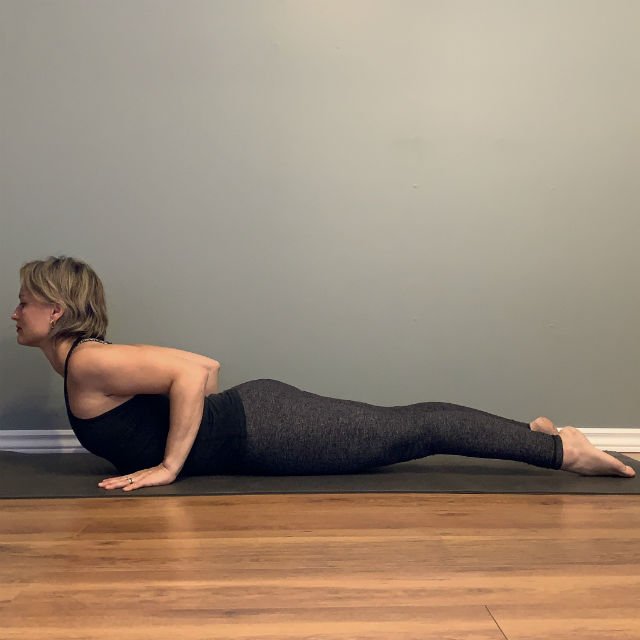
Lie on your belly with your forehead on the mat, legs close together and the tops of your feet flat and pressing down. Plant your palms by your lower ribs with your elbows pointing up and behind you. Inhale and drag your palms back lightly against the resistance of the sticky mat to lift your face and heart. Feel a width across the front of the shoulders and expand the front of the heart space. Keep your legs grounded and your neck lengthy as you continue to breathe.
Downward-Facing Dog (Adho Mukha Svanasana)
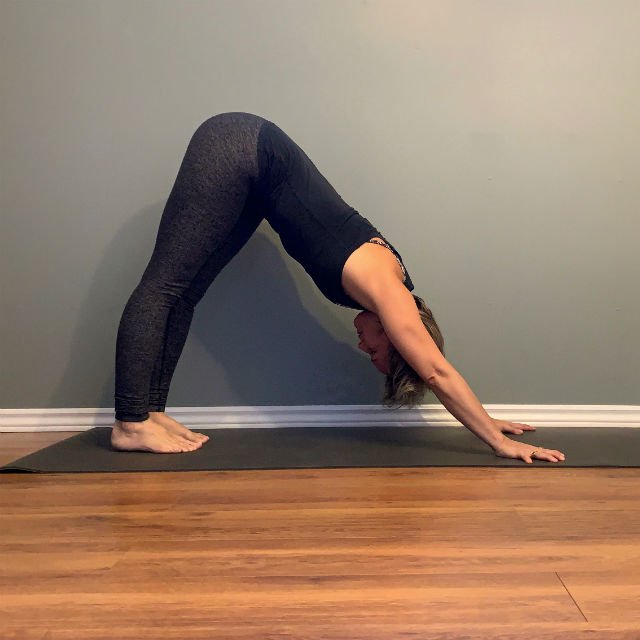
From cobra, inhale, tuck your toes, and push up to plank, but don’t stop. Continue lifting your rear and hips straight up and back, coming into an inverted V position. Exhale as you straighten your legs and drop your heels toward the earth. Keep your hands planted, your arms straight, and room between your shoulders and ears. If you have tight hamstrings, bend your knees slightly, press into your palms more, and lengthen the spine.
Child’s Pose (Balasana)
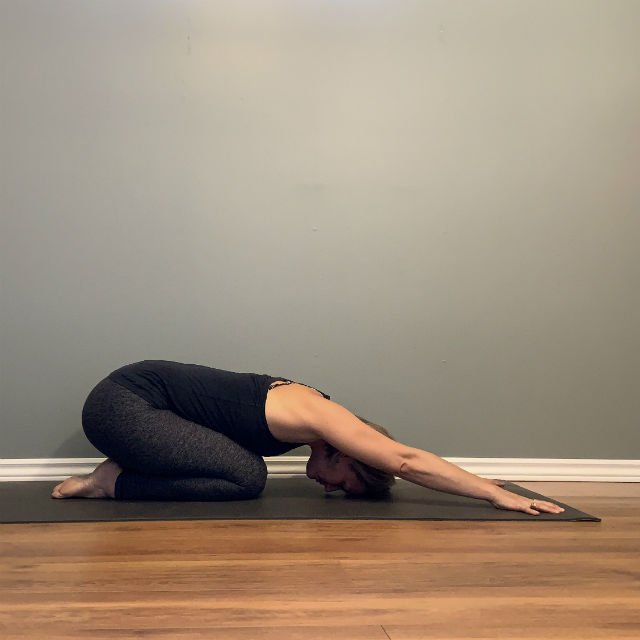
Come to all fours, then move your rear back onto your heels, laying your belly on your thighs and forehead on the mat. Extend your arms on the mat above your head (shown) or lay them along your sides. Breathe across your entire back, but especially the upper back, expanding the back of the heart space.
Half Lord of the Fishes Pose (Ardha Matsyendrasana)
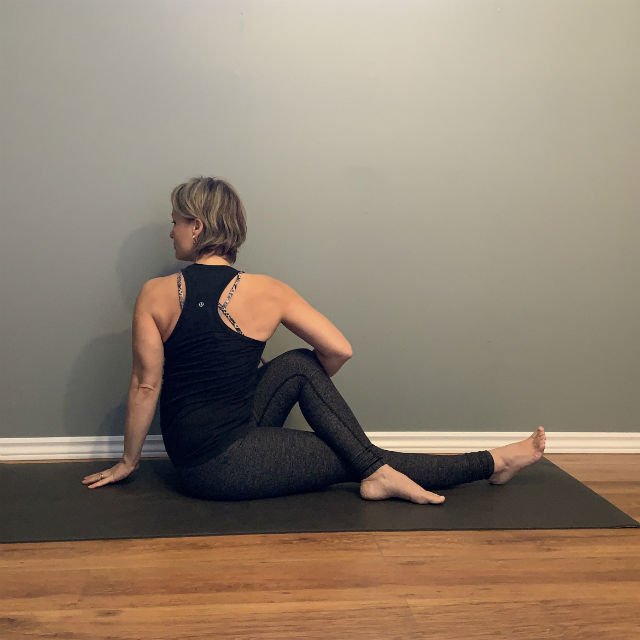
Transition to sitting with your legs extended in front of you. Bend your left knee and place your left foot outside of your right knee. Exhale and twist to the left. Place your left hand behind you to help you sit up tall and, with your right arm, pull your left knee closer to help you twist. On each inhale, sit up a little taller. On each exhale, twist a little deeper. Do the pose on each side of your body.
Bound Angle Pose (Baddha Konasana)
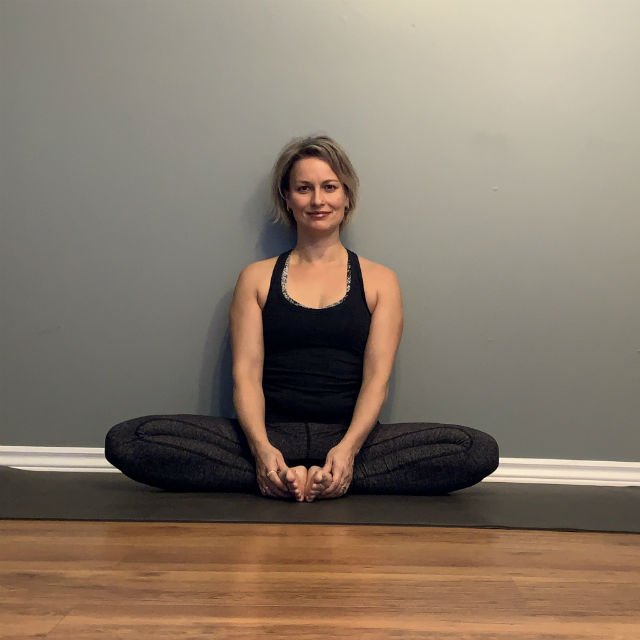
Sit with your back against a wall. Bend your knees and place the soles of your feet together. Press the inner edges of the feet together as you lengthen the inner thighs in the opposite direction. Reach the inner knees toward the sides of the room; draw the outer knees into the outer hips.
Wide Angle Forward Fold (Upavistha Konasana)
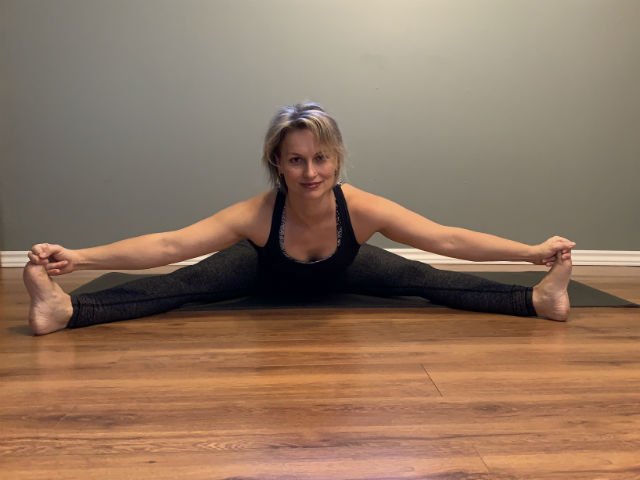
Bend your knees into your chest and spread your legs wide apart, but not so wide that you cannot reach your feet with your hands. Lengthen your spine and fold forward as you hinge at the hip creases. Stay rooted through your sitting bones while keeping your kneecaps and toes facing up. Try to resist the urge to move forward, which could disconnect your seat from the earth. Instead, move into the open space gradually by drawing your navel into your spine.
Supported Bridge Pose (Setu Bandha Sarvangasana)
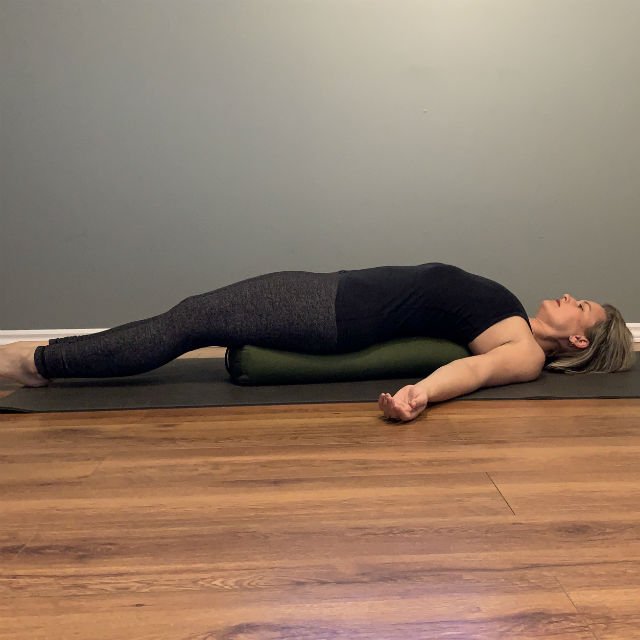
Place a bolster long ways on your mat. Sit with your lower back pressed against the short side of the bolster and slowly lie down on the bolster with your legs extended and toes pointing. Let your arms rest palms up at about a 45-degree angle from your body and broaden your shoulder blades as you move your chest toward your chin. To come out of the pose, slowly roll off the bolster back onto the ground.
Legs Up the Wall (Viparita Karani)
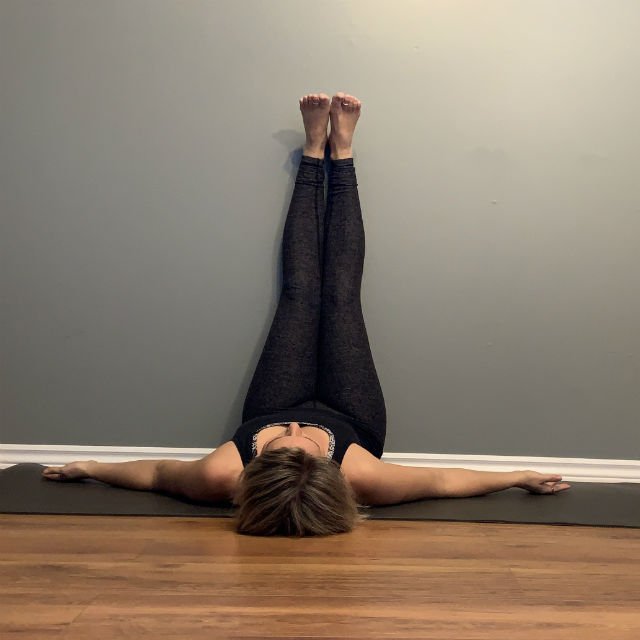
Bring your seat as close to a wall as possible, so that your butt is pressed directly against the meeting point of the floor and the wall. Extend your legs straight up and recline with your palms facing up so your body makes a right angle or an L shape. Close your eyes and allow gravity to settle your femurs into the hip sockets.
Easy Seated Posture (Sukhasana)
Come to a comfortable cross-legged seat with your shins crossed right in the center. Then practice a simple breathing technique sometimes referred to as “yogic breathing”: Following a ratio of 2:1 (exhale: inhale), make your exhalation twice the length of your inhalation. Sit here for as long as you wish.
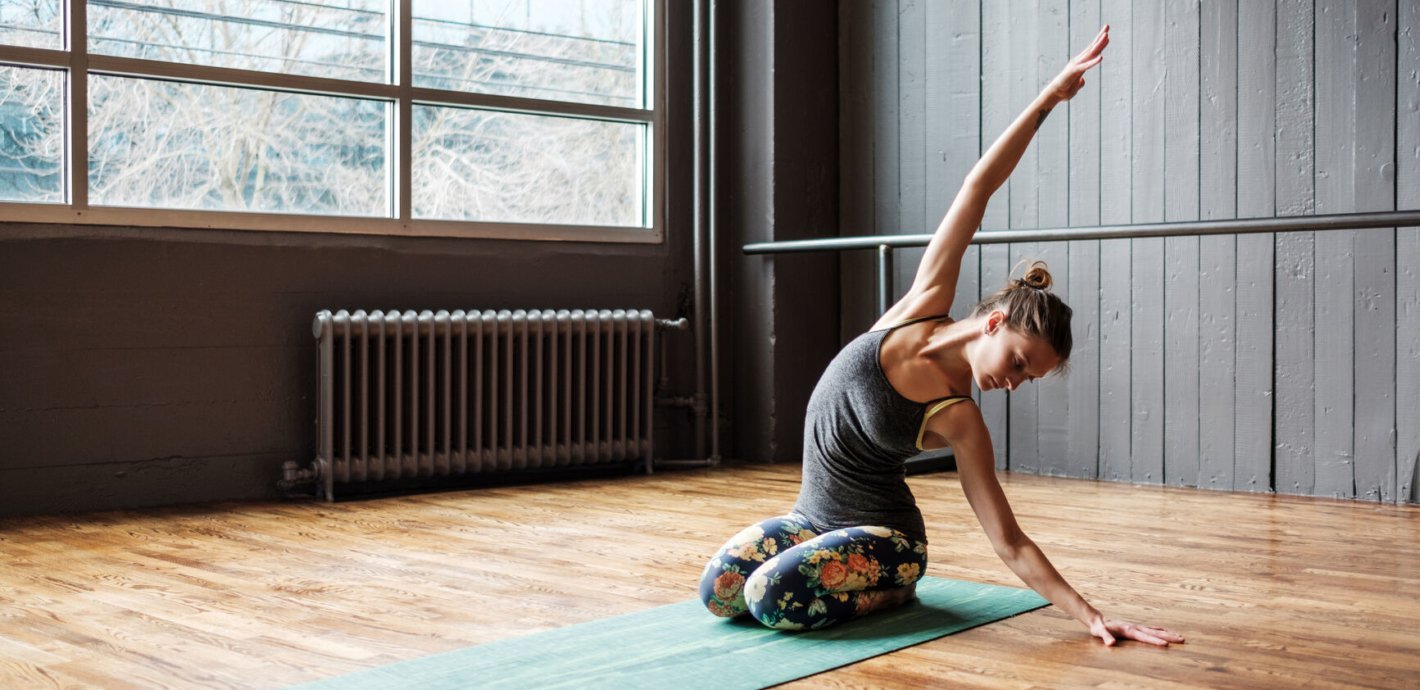

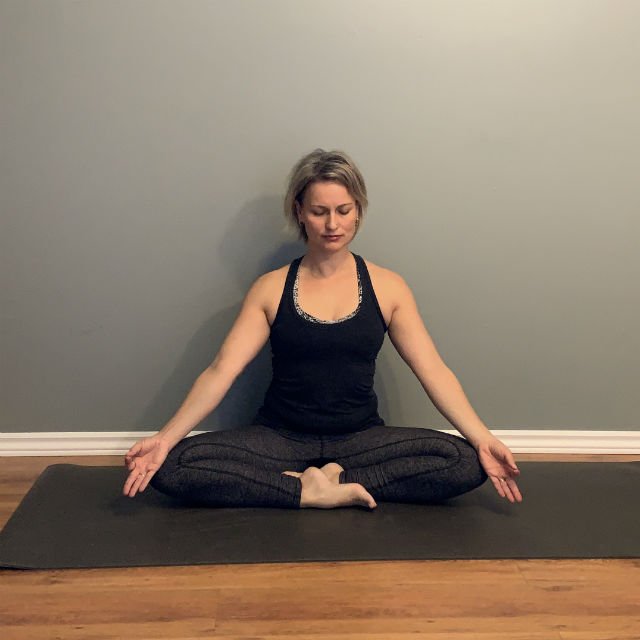
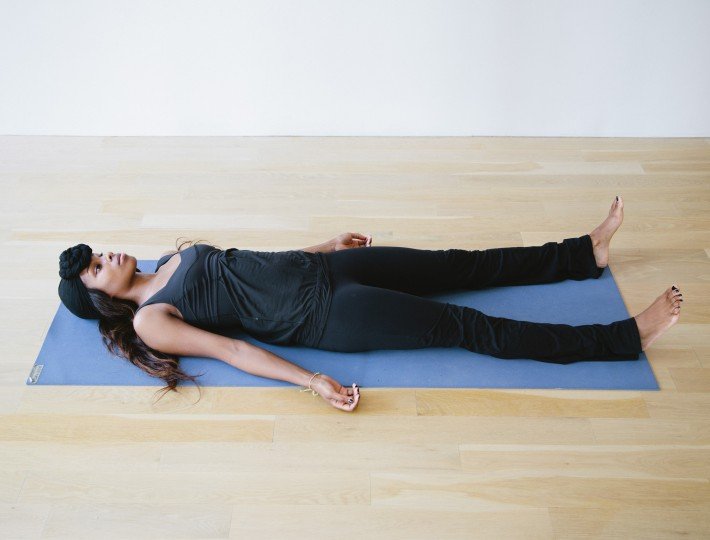
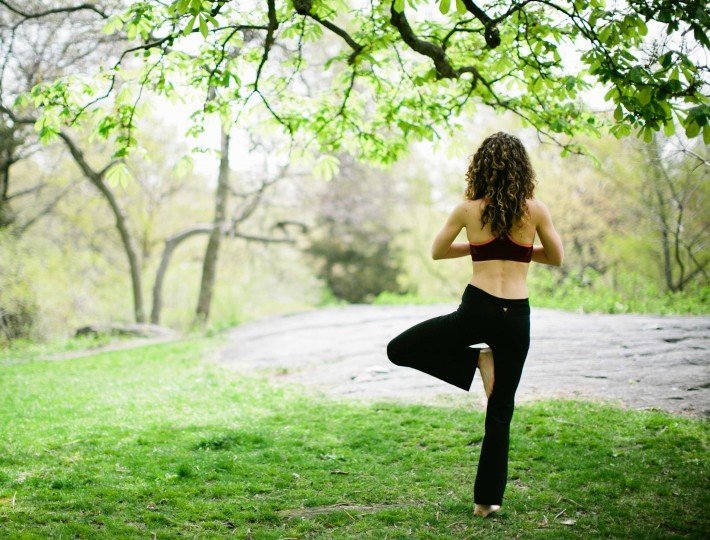
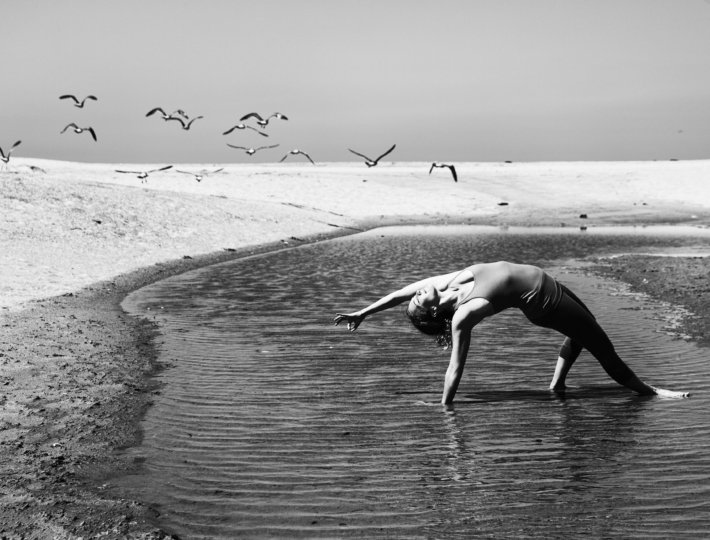






Comments (0)